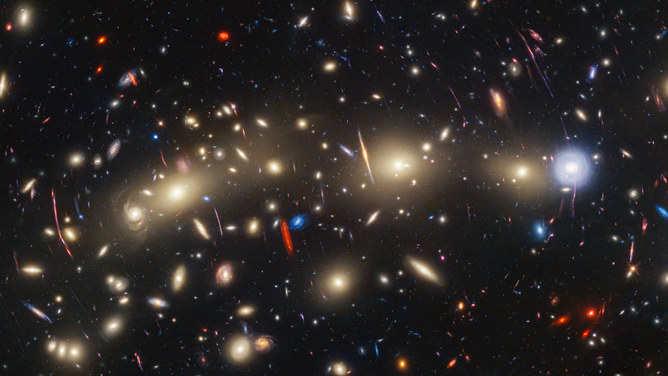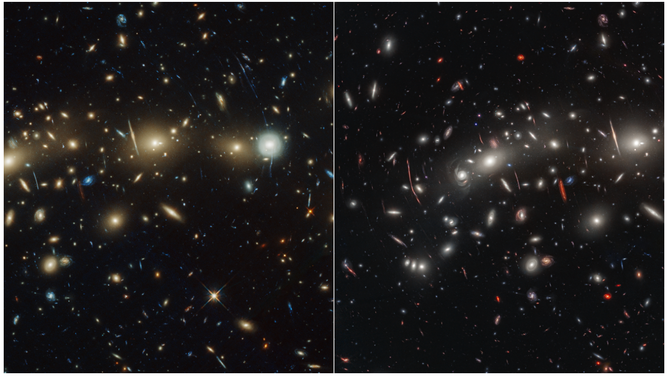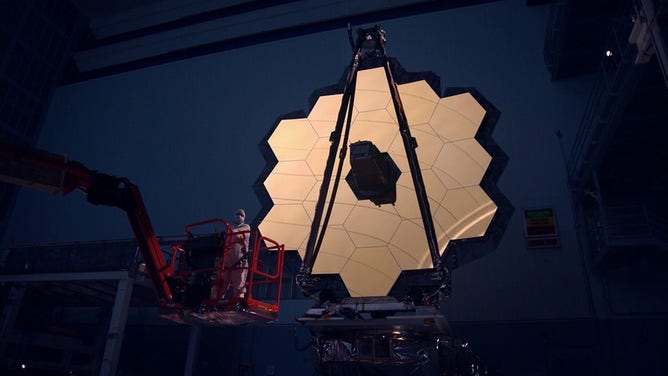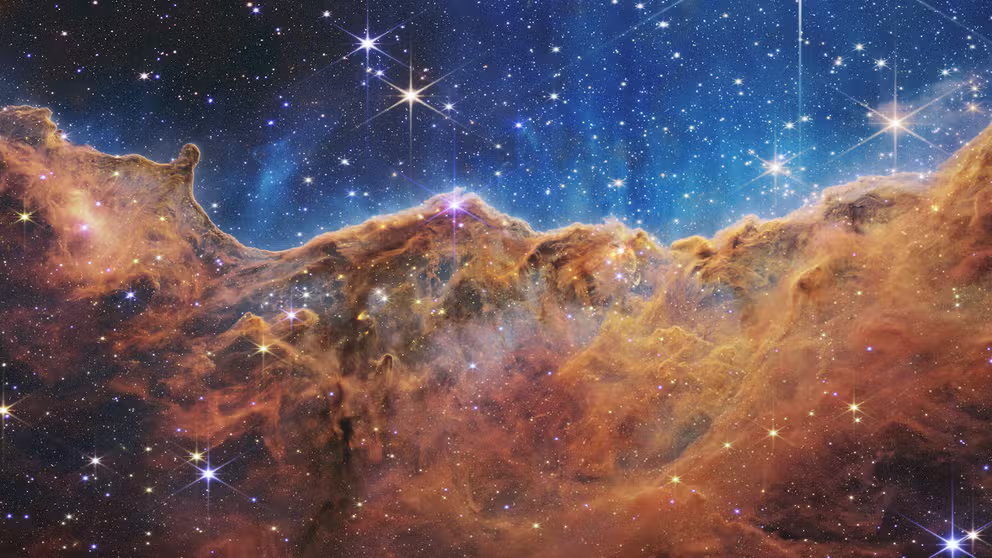New NASA image shows the most colorful view of the universe yet
The image of MACS0416 was produced using observations from NASA’s James Webb Space Telescope and Hubble Space Telescope.
FILE: Incredible images from James Webb show the universe like never before
As the world's premier space science observatory, the James Webb Space Telescope is giving us glimpses into distant worlds like never before.
NASA recently released a vivid image of a pair of galaxy clusters in one of the most comprehensive views of the universe ever taken, according to the agency.
Called MACS0416, the galaxy clusters are located about 4.3 billion light-years away from Earth. According to NASA, the clusters of MACS0416 will eventually combine to create an even larger galaxy cluster.
A galaxy cluster is a collection of hundreds or thousands of individual galaxies, NASA said. They are some of the largest objects in the universe.
What the image shows

Part of image of MACS0416.
(NASA, ESA, CSA, STScI, J. Diego (Instituto de Física de Cantabria, Spain), J. D’Silva (U. Western Australia), A. Koekemoer (STScI), J. Summers & R. Windhorst (ASU), and H. Yan (U. Missouri) / NASA)
In NASA’s latest image, the many constituent galaxies of MACS0416 appear like red, white, blue and green Christmas lights glimmering in the night sky.
NASA said the different colors denote the distances of each galaxy. The bluest galaxies are relatively close and often show intense star formation, and the redder galaxies tend to be farther away.
NEW IMAGES SHOW GALAXIES COLLIDING, FORMING NEW GALAXY CLUSTER
Aside from distance, the colors provide other clues. For example, galaxies displaying the richest red hues do so because they contain large amounts of cosmic dust. This allows them to absorb bluer colors of starlight.
Why the image was taken

This side-by-side comparison of galaxy cluster MACS0416 as seen by the Hubble Space Telescope in optical light (left) and the James Webb Space Telescope in infrared light (right).
(NASA, ESA, CSA, STScI / NASA)
The image of MACS0416 was produced using observations from NASA’s James Webb Space Telescope and Hubble Space Telescope.
In addition to creating a colorful image, those observations were taken in an effort to find transients or objects that display varying brightness over time. By using those observations, researchers were able to identify 14 transients.
‘GLISTENING’ CLUSTER TEEMING WITH STARS CAPTURED BY HUBBLE TELESCOPE
"We’re calling MACS0416 the Christmas Tree Galaxy Cluster, both because it’s so colorful and because of these flickering lights we find within it," said Haojing Yan of the University of Missouri in Columbia, lead author of one paper describing the scientific results. "We can see transients everywhere."

Shown here, the James Webb Space Telescope primary mirror illuminated in a dark cleanroom.
(NASA)
One of those transients is a star system the research team nicknamed "Mothra." According to NASA, the name is a nod to the star system’s "monster nature," as it is both extremely bright and extremely magnified.
Mothra joins another lensed star the researchers previously identified that they nicknamed after another monster in Japanese cinema, "Godzilla."
